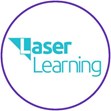Claim learners’ certificates by Friday 11 July. If your qualification doesn’t include an external assessment and learners are expecting results in August, make sure to claim certificates by this date. For qualifications with external assessments, claim within two working days of receiving confirmed results. Find out more on our timely delivery of results page.
Laser Learning: The shock of the new application
Your new application whirs into life. An unfamiliar screen appears. Suddenly nothing makes sense. Words have lost their meaning! What on earth does that button do? Perhaps you are excited about this new learning opportunity? Or perhaps you are filled with cold dread at the effort ahead of you?
Either way, what follows is the five-step method I use to get over the ‘shock of the new’ when using an application for the first time.
1. Stand back
Before you start… stop! Spend a few minutes making a list of the features you expect to see. With an e-portfolio, for example, you might anticipate being able to:
- Add some learners and assign a course
- Send a message to one or all learners
- Check on a learner’s progress.
You’ve now primed yourself and will effortlessly spot the parts of the application most relevant to you. Your exploration will naturally focus on what matters most for you at this moment.
2. Take a look around
Now, back to the screen. First, give yourself time to absorb the look and feel of the screens. The ‘visual language’ of the buttons, icons, and layout should come into focus. Your previous experience with other applications will help here. For example, a cogwheel nearly always means ‘Settings’.
Then, sit back – literally. Sit back in your chair so that you can zoom out and see the whole screen from a distance. Distinct zones and broad areas should become apparent. Perhaps there’s a banner at the top, a menu to the side, and the ‘business part’ of the screen in the middle.
In the menus, find the ‘Home’ button. If you become lost while exploring, clicking the ‘Home’ button will return you to familiar territory. Poke about a bit and see what happens when you click a few menu options. The Laser e-portfolio has an ‘always on’ menu, so most functions are a single click away – a feature our clients really appreciate.
Dwell your mouse pointer over the buttons. After a moment, ‘Tool tips’ may appear, which will explain what the button does. Hopefully the wording used on the screen is plain language. Try to associate the explanation with the image on the button.
Hunt down the guidance or help section. Many applications are delivered through your browser so you can use the browser’s search capability to quickly find what you are looking for – with Chrome it’s ‘ctrl + f’ and a search box appears.
The guidance on the Laser e-portfolio is arranged by task, e.g. ‘Adding new learners (Admin)’ and is designed to help you be effective quickly.
3. Go on a mission!
By now, the initial shock has subsided. There is less confusion and more clarity. You’re on the steepest part of the learning curve and every mouse click brings new discoveries.
Assign yourself a straightforward task, say viewing the specification for a qualification. On the Laser, that’s two clicks from Home! When you complete your mission, take a moment to acknowledge the achievement, and then set yourself a slightly more complex challenge. I usually log out and back in again between each such learning task as it helps me to consolidate what I have learned into a single ‘how-to-do-it’ memory.
Don’t be afraid to experiment. Trust the application to keep safe any data you have entered. You’ll get a warning if you are about to do something destructive. At Laser Learning, we set up a demonstration system for each client so that even the most enthusiastic experimentation is risk-free!
4. Deep dive
You’ve now naturally absorbed the language of the application and may even be able to take a guess at how you would carry out a particular task – so it’s time to deep-dive.
You can now focus on efficiency. Let’s say that you had to add twenty learners to an e-portfolio system – you could do this through the menu options one at a time for each learner. Or perhaps you could explore whether there is an option which lets you upload from a single ‘.csv’ file.
Many menu items have keyboard shortcuts, for example ‘ctrl + p’ usually means ‘print.’ Using these can quickly embed in muscle memory and become automatic. Although increasingly rare, some applications have a ‘Context menu’, which is exposed when you use a right-mouse click on a particular area of the screen. These are often aids to efficiency and simply help you do a task a bit more quickly.
Having a ‘beginner’s mind’ – you may even have suggestions about how the application could be improved. At Laser Learning, we’re always keen to hear these.
The last step?
5. Add your new skills to your CV!
When you complete your mission, take a moment to acknowledge the achievement, and then set yourself a slightly more complex challenge. I usually log out and back in again between each such learning task as it helps me to consolidate what I have learned into a single ‘how-to-do-it’ memory.


